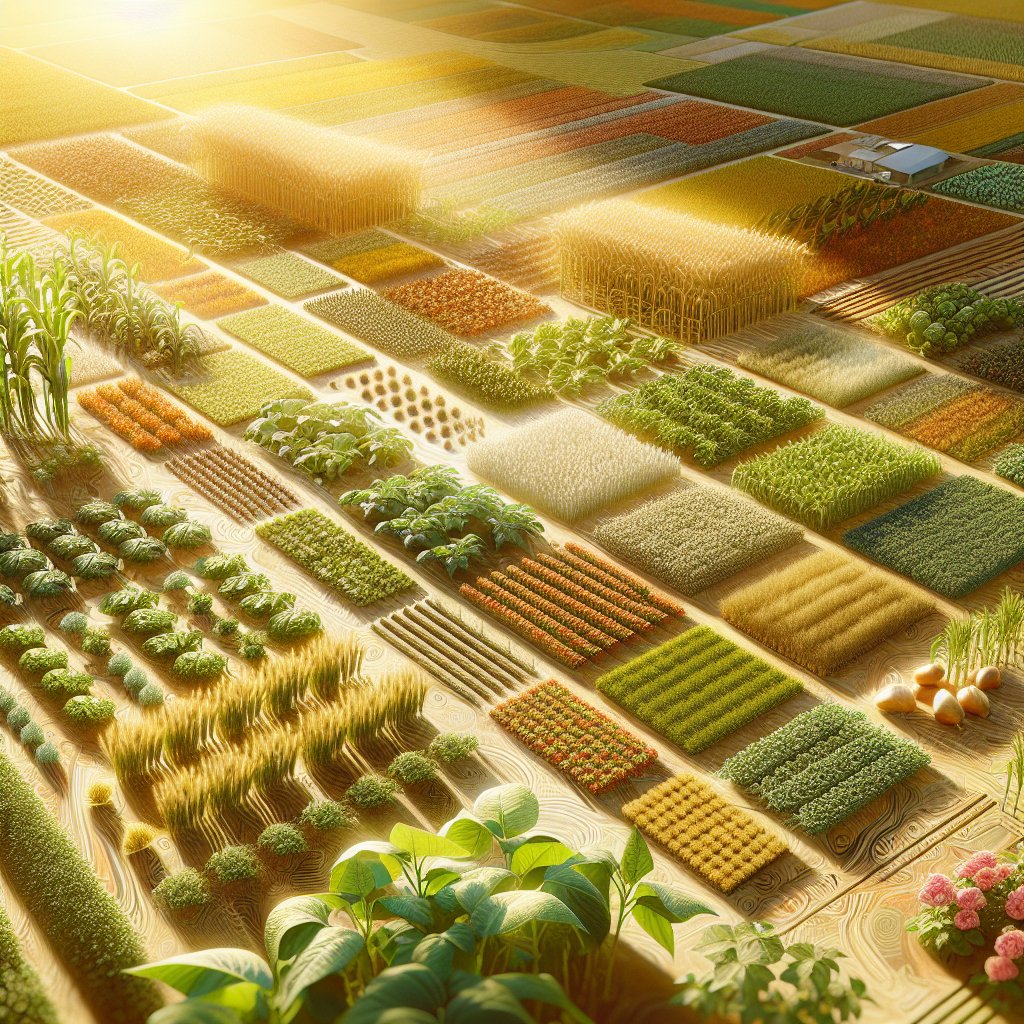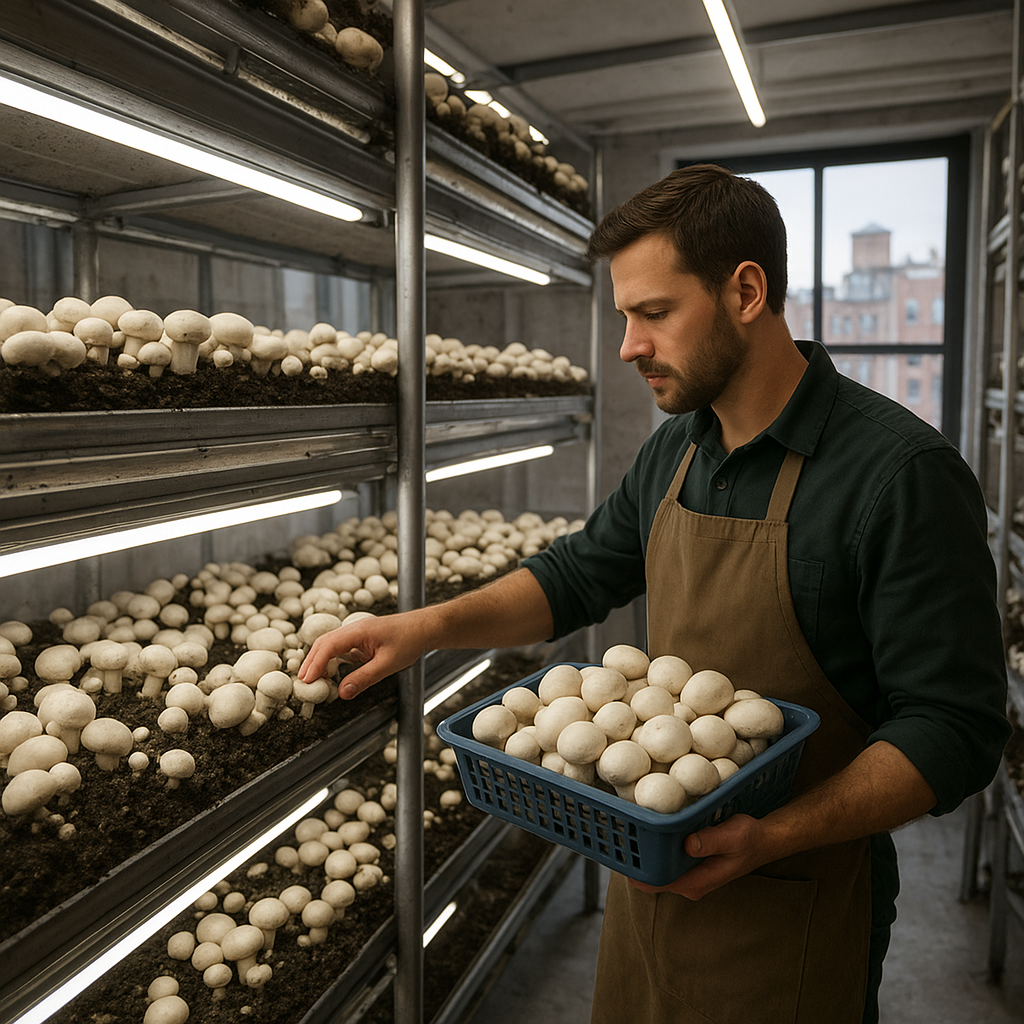Crop diversity plays a crucial role in enhancing the resilience of agricultural systems. As the global population continues to grow and climate change presents new challenges, the need for diverse crop varieties becomes increasingly important. This article explores the significance of crop diversity in building resilient agricultural systems, examining its benefits, challenges, and the strategies needed to promote it.
Understanding Crop Diversity
Crop diversity refers to the variety and variability of plant species used in agriculture. It encompasses the genetic differences within a single species, as well as the range of different species cultivated. This diversity is essential for maintaining ecosystem health, ensuring food security, and providing farmers with the tools they need to adapt to changing environmental conditions.
The Role of Genetic Diversity
Genetic diversity within a crop species is vital for its ability to withstand pests, diseases, and environmental stresses. Different genetic traits can confer resistance to specific threats, allowing some plants to survive and thrive where others might fail. This diversity acts as a buffer against the complete loss of a crop due to a single pest or disease outbreak, thereby enhancing the resilience of the agricultural system.
Moreover, genetic diversity can lead to improved crop yields and quality. By selecting and breeding plants with desirable traits, farmers can develop varieties that are better suited to local conditions, more nutritious, or have longer shelf lives. This process of selection and breeding relies on a rich pool of genetic material, underscoring the importance of maintaining genetic diversity within crop species.
Species Diversity and Ecosystem Services
Species diversity, or the variety of different crop species grown, contributes to the resilience of agricultural systems by providing a range of ecosystem services. Diverse cropping systems can improve soil health, enhance water retention, and support beneficial insects and pollinators. These services are crucial for sustainable agriculture and can reduce the need for chemical inputs, such as fertilizers and pesticides.
Additionally, species diversity can help mitigate the impacts of climate change. Different crops have varying tolerances to temperature, precipitation, and other climatic factors. By cultivating a diverse array of species, farmers can reduce the risk of total crop failure due to extreme weather events or shifting climate patterns. This diversity also allows for more flexible crop rotations, which can improve soil fertility and reduce pest and disease pressures.
Challenges to Crop Diversity
Despite its importance, crop diversity faces several challenges that threaten its preservation and utilization. These challenges include the dominance of monoculture systems, the loss of traditional knowledge, and the impacts of globalization and market pressures.
The Rise of Monocultures
Monoculture farming, or the cultivation of a single crop species over large areas, has become increasingly common due to its perceived economic efficiency. However, this practice can lead to a reduction in crop diversity and increase the vulnerability of agricultural systems to pests, diseases, and environmental changes. Monocultures often rely heavily on chemical inputs to maintain productivity, which can have negative environmental and health impacts.
The focus on a limited number of high-yielding crop varieties can also lead to the erosion of genetic diversity. As farmers adopt these varieties, traditional and locally adapted varieties may be abandoned, leading to a loss of valuable genetic resources. This erosion of diversity can reduce the ability of agricultural systems to adapt to future challenges, such as new pests or changing climate conditions.
Loss of Traditional Knowledge
Traditional knowledge about crop diversity and management practices is often passed down through generations of farmers. This knowledge includes information about the cultivation, use, and preservation of diverse crop varieties. However, as agricultural systems become more industrialized and globalized, this traditional knowledge is at risk of being lost.
The loss of traditional knowledge can hinder efforts to maintain and utilize crop diversity. Without this knowledge, farmers may be less able to identify and select varieties that are well-suited to their local conditions. Additionally, the erosion of traditional knowledge can lead to a disconnect between farmers and the biodiversity that supports their livelihoods, reducing the motivation to conserve and promote crop diversity.
Strategies for Promoting Crop Diversity
To address the challenges facing crop diversity and enhance the resilience of agricultural systems, a range of strategies can be employed. These strategies involve the collaboration of farmers, researchers, policymakers, and other stakeholders to create supportive environments for diverse cropping systems.
Conservation and Utilization of Genetic Resources
Conserving genetic resources is a critical step in promoting crop diversity. This can be achieved through the establishment of seed banks, which store and preserve seeds from a wide range of crop varieties. Seed banks serve as repositories of genetic material that can be used for breeding and research, ensuring that valuable traits are not lost.
In addition to conservation, the active utilization of genetic resources is essential. Breeding programs that focus on developing new varieties with diverse genetic backgrounds can help enhance crop resilience. These programs should prioritize the inclusion of traditional and locally adapted varieties, as they often possess traits that are valuable for specific environments.
Supporting Diverse Cropping Systems
Encouraging the adoption of diverse cropping systems can help promote crop diversity and resilience. This can be achieved through policies and incentives that support practices such as intercropping, agroforestry, and crop rotation. These practices can improve soil health, reduce pest and disease pressures, and enhance ecosystem services.
Education and extension services play a crucial role in supporting diverse cropping systems. By providing farmers with information and training on the benefits and management of diverse crops, these services can help build the capacity of farmers to implement and sustain diverse agricultural practices.
Strengthening Local and Regional Food Systems
Strengthening local and regional food systems can create markets for diverse crop varieties and support the livelihoods of farmers who cultivate them. This can be achieved through initiatives that promote local food production and consumption, such as farmers’ markets, community-supported agriculture, and farm-to-school programs.
Policies that support fair trade and equitable market access for smallholder farmers can also contribute to the promotion of crop diversity. By ensuring that farmers receive fair prices for their diverse crops, these policies can incentivize the cultivation and conservation of a wide range of crop varieties.
Conclusion
Crop diversity is a fundamental component of resilient agricultural systems. It provides the genetic and species diversity needed to withstand environmental challenges, improve food security, and support sustainable farming practices. However, the preservation and promotion of crop diversity face significant challenges, including the rise of monocultures and the loss of traditional knowledge.
To overcome these challenges, a concerted effort is needed to conserve genetic resources, support diverse cropping systems, and strengthen local and regional food systems. By working together, farmers, researchers, policymakers, and other stakeholders can create an agricultural landscape that is diverse, resilient, and capable of meeting the needs of a growing global population.



